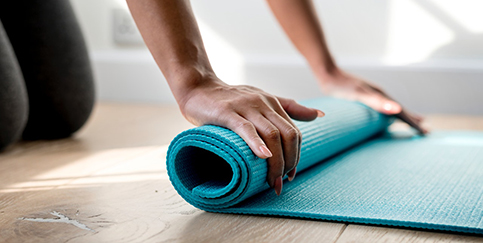Public Health
Yoga shows promise in reducing pain for Veterans with Gulf War Illness


By P. J. Bayley, Rachael Cho, and Louise Mahoney
Despite decades of research, no one has been able to find a clear cause for the fatigue, pain, and cognitive disturbances that are a part of what is commonly referred to as “Gulf War illness” (GWI). Previous research supports the view that Gulf War Veterans with GWI are medically ill, but their symptoms are not currently well-treated by conventional medical interventions.
Clinical trials show that yoga can be effective in treating some of the most common symptoms of GWI, especially chronic musculoskeletal pain. The War Related Illness and Injury Study Center (WRIISC) in Palo Alto, CA, conducted the study “Comparative Efficacy of Yoga vs. Cognitive Behavioral Therapy (CBT) for Treating Chronic Pain in Gulf War Illness” to see if yoga could treat chronic pain in Veterans with GWI.
WRIISC researchers developed a 10-week yoga program using a broad range of yoga techniques, including controlled breathing, yoga postures, and meditation. They also developed a step-by-step homework guide, and study participants were asked to practice yoga at home. A comparison group followed a 10-week cognitive behavioral therapy (CBT) protocol focused on the treatment of pain. The CBT group was also provided with and asked to complete homework. Seventy-five Veterans with GWI were randomly divided into one of the two treatment groups – yoga or CBT for pain.
At the end of treatment, the yoga group showed a significant reduction in pain relative to baseline ratings. In contrast, researchers found no significant reduction in pain in the CBT group. At the six-month follow-up, Veterans in the yoga group still had reduced pain. The study results are preliminary, and data analysis is ongoing into the treatment effects on pain, mood, quality of life, and autonomic nervous system function. However, these initial findings on yoga indicate that it is a safe and effective treatment for pain in GWI.
The development of complementary and integrative health for the treatment of chronic conditions, including pain, is a growing trend in healthcare. The 10-week protocol from this study and the homework guide will be published along with the final study results. This approach could be rapidly adopted by healthcare providers who may like the relatively low-cost and minimal resources needed to provide such yoga programs in a group class setting.
This project was supported by a CDMRP/ DoD Gulf War Illness Research Program Innovative Treatment Evaluation Award (#11488016)




















